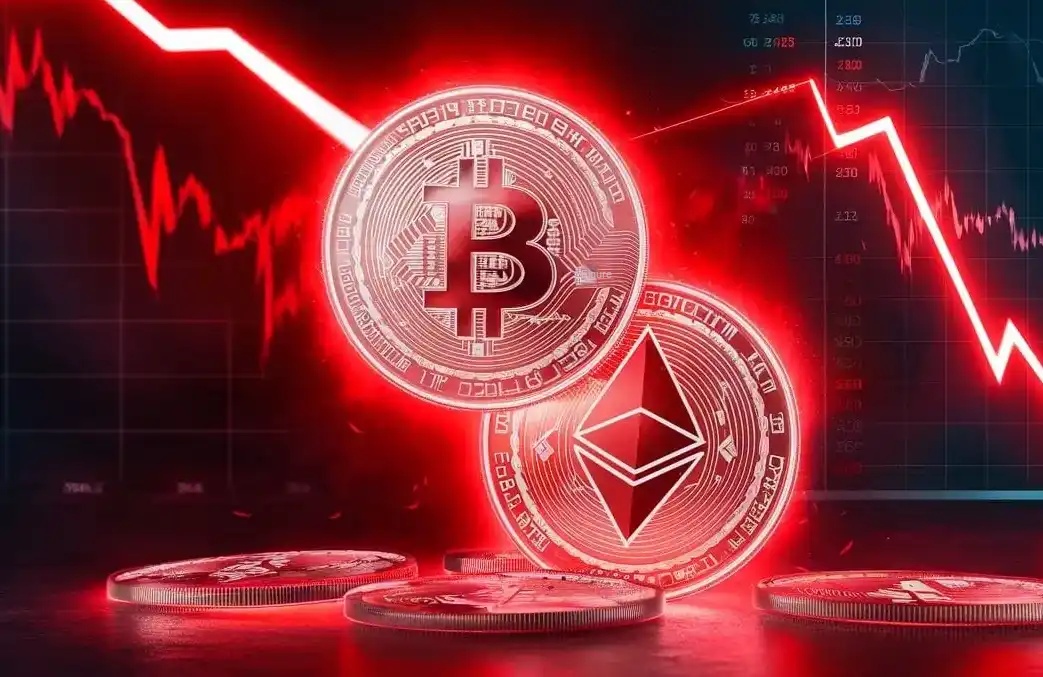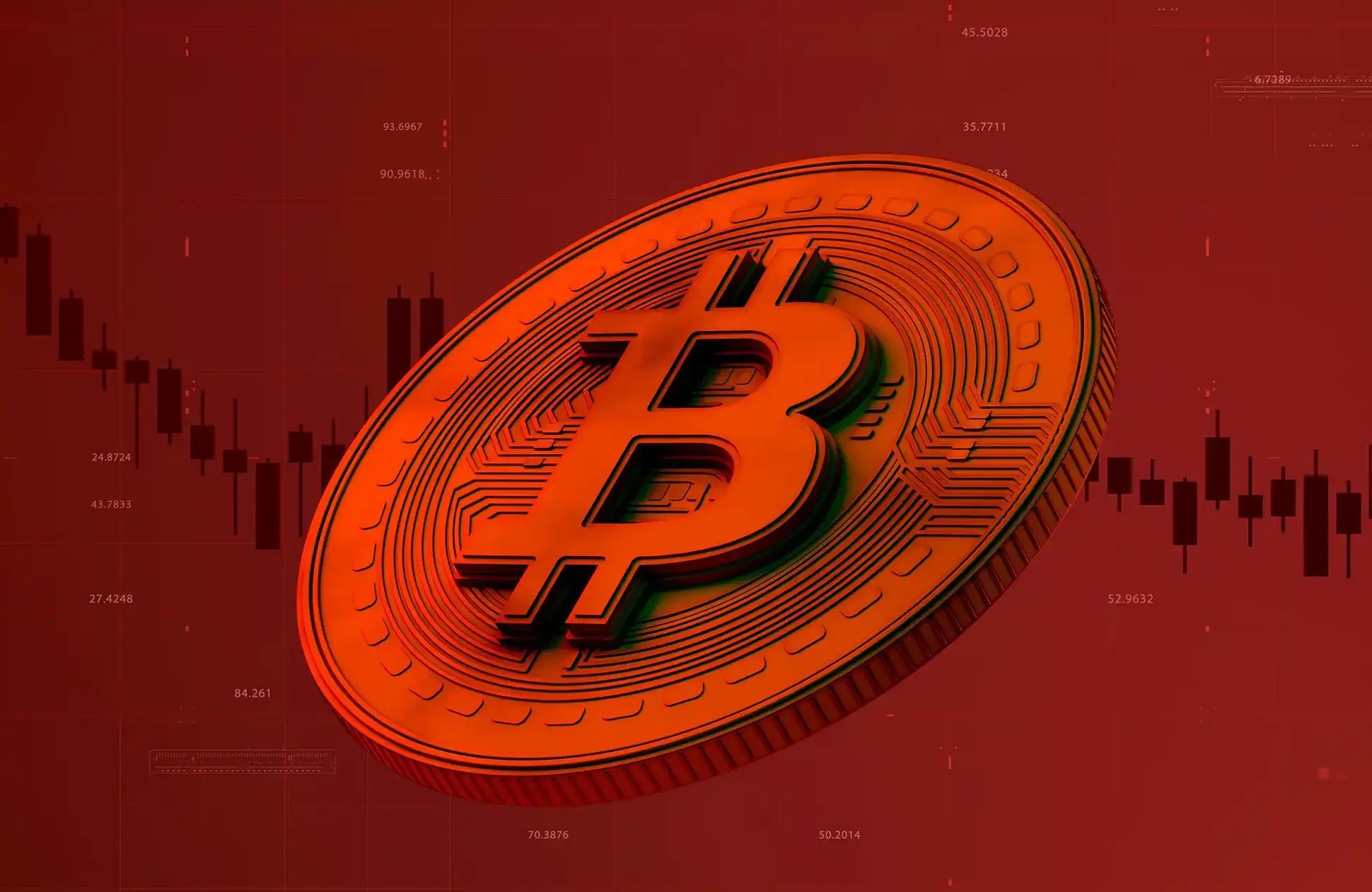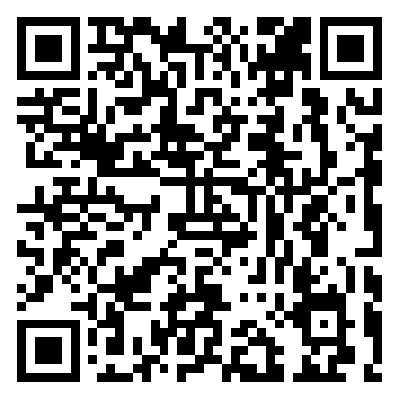Token2049 "Micro-Essay" Collection: Innovation Fatigue, Capital Drive; The Ordinary Person's Upward Path Is Being Compressed
Token2049 Singapore will be held in Singapore on October 1-2, 2025. As one of the world's largest Web3 events, Singapore has become a hub for crypto innovation in Asia and globally. The conference will bring together entrepreneurs, investors, developers, and media from around the world, focusing on hot topics such as crypto finance, infrastructure, RWA, AI × Web3, and more. In addition to the main venue, there will be thousands of city-wide peripheral events, including meetups, workshops, hackathons, dinners, and parties.
BlockBeats has compiled several "short essays" about Token2049 Singapore for everyone to see the experiences and insights of these VCs and KOLs at the event, so you won't miss out on the cutting-edge trends.
Scott (Founder of Monsterblockhk.eth)

After returning to Canada from Token2049 SG, I saw many people on Twitter expressing their anxiety. They saw a certain trader or KOL making hundreds of thousands of dollars a year, while they themselves only make ten thousand dollars a month. This FOMO mindset could easily harm oneself. I initially thought that this year's SG event would be smaller because I always believed that the market is still in the stage of BTC, ETH, and a few narratives experiencing short-term bursts, not a full-fledged bull run. That's why many KOLs you know would say they won't be coming.
For me, the more worth-attending events are those related to the ecosystem. Attending SuiFest, meeting @Scallop_io, @johnny_0168, @djchrisssssss, and doing an interview about $SCA; going to Solana APEX, chatting with @wangmeili_333 about @TradeNeutral, and finally meeting Vesper @1cryptosheep and exchanging greetings, and moving forward together on Hong Kong-related initiatives.
It's true that there are fewer other side events compared to last year, and I believe many people have noticed this. If we were to relate this situation to the market, I would say: the market conditions are really not good, only exchanges are consistently making money, so the bigger they get, the more events they hold. Furthermore, a few ecosystem narratives are getting tangled up, such as the recent discussion around ICM. Also, because market participants are not as plentiful as before, project teams have limited revenues and naturally don't want to host events. You could say the crypto space is still lively because where people gather, there is activity, but at the same time, you can see it's not yet the time of a full-fledged bull market. Otherwise, why haven't we seen a large influx of external capital or the older generation asking you how to buy crypto?
Returning to the FOMO mentality mentioned at the beginning of this article, this is also something I learned during this work trip. Many people went to Singapore for networking events, or were introduced to project BDs by acquaintances. The information they obtained was abundant, so everyone's general awareness was greatly enhanced.
I think the crypto world is just like life. The key is not how many money-making methods there are, but whether you can find the most suitable way of survival for yourself. Someone who is good at trading and earns hundreds of thousands of dollars each month has achieved this through hundreds or thousands of days of backtesting and resource investment. Conversely, they may not necessarily excel at community management or writing articles, right? The most important thing is that when we see other money-making methods in the market, we should reflect on whether there are any aspects of what we are doing that are worth emulating, to help ourselves grow. Instead of blindly copying what others do, the saying "don't aim too high or settle too low" comes from this. Everyone in the crypto world is cultivating their own strengths, finding their own direction, and then continuously researching to be the best. In the long run, you will still have a positive expected value (EV). Why not do that?
Starry Lucky Star (Crypto KOL)

Token2049 Five Takeaways:
1. The attendance is decreasing: Although hotels in Singapore were very expensive this year, mostly due to National Day and the Formula 1 Grand Prix, it was still far from last year's levels. However, this does not mean that there are no people in the crypto circle; it should be that more and more people have realized that "dry sitting" is probably the best option for the average person in terms of positive EV, rather than "socializing." PS: @EnHeng456 should be an exception. I also really want to learn how EnHeng moved from socializing to trading profits.
2. BDs dominate the crowd: I also went to Singapore to fulfill work tasks. Although I knew that most of the people coming were BDs, I still had some small chats at the venue. Sure enough, most of them were BDs or from MKT Agencies, coming out to do business. There were occasionally a few KOLs, but they were few and far between.
3. Private gatherings for communication are the most useful: You can only catch the big shots and core circle people in private gatherings; public speeches don't count. Even if they speak publicly, you can't approach them for a conversation. Upscale socializing, accumulating connections, private gatherings are the most useful. This year was very interesting because I saw @gmgnai only hosted an invite-only yacht event. Throughout the night, numerous English-speaking trench traders were so excited that they sent out numerous tweets, such as @ihateoop and @orangie. As for project teams that held public events, they burned money, but the effect was minimal.
4. The above phenomenon indicates that the upward path of ordinary people is being compressed: In the past, you could bump into a few big shots at a conference and still have a chance to network. Now, everything useful is invitation-only private gatherings. If you don't have the capability or the ability to pretend to have the capability, it's very difficult to meet amazing people.
5. Charm Dissipation: Seeing and magnifying others' highlights, learning. Seeing through the leverage quietly added to others' speech, dissolving charm.
Zixi.bnb (StableStock CEO)

This was my 4th time attending SG 2049, and my first time attending as a Founder after transitioning from an Investor/GP. In the past three 2049 events, it was more about the "hustle and bustle"; I attended all kinds of events and exhibitions without focus, resulting in exhaustion and low output efficiency. This time, I was very clear about what I wanted, so I focused on participating in a few small events/conferences. As a result, I wasn't tired at all this time, and the outcome was maximized.
As Stablestock will launch our first batch of stock tokenization products on the BNB Chain Native mainnet next week, we hosted a small private dinner, inviting our MM/KOL/agency partners to dinner. With the number of attendees limited to fewer than 50 people, the communication effectiveness of everyone was excellent (and it was the first time in my four years of attending 2049 events that I had a full meal during an event).
My biggest realization from the 2049 event at the end of September and several events in August in ETH NYC is that RWA/Tokenization stock is engulfing the world. I met an investor at 2049 who was very optimistic about our project and had a saying, "If stablecoins are the USD's L2, then Tokenization stock is stocks' L2, and it is a new downstream in the stablecoin ecosystem, or even the L3 of stablecoins". The direction now verified by RWAs is stablecoins/USD, and the next batch of verified directions will be stocks that are more transparent, easy to redeem, and mint.
Now, not only cryptocurrency investors/exchanges but also investors from many traditional industries are paying attention to Robinhood/Ondo/Xstock and Stablestock, eagerly looking forward to using our platform to bridge TradFi and DeFi, leveraging new assets to build new products on-chain. Apart from ETFs, loans, and other traditional products in the world, I see Crypto devs wanting to continue building stablecoin companies with Tokenization stock, with massive brainstorms; they can partner with web2 fintech giants and through middleware, reach countless web2 brokers, bringing countless stock liquidity to the chain.
Many of the founders/investors indeed have grand vision, and every quirky idea is an opportunity in the StockFi space. Entrepreneurs relevant to this area are welcome to contact me, discuss their idea, and jointly expand the StockFi space.
CHI Labs

Token2049 Firsthand Experience:
1. Speaking Where Users Make Decisions, in Words They Understand
The buzz of Token2049 has come to an end. As the revelry fades, a sharper question than any Alpha emerges: Where are the Chinese users as project teams and builders? This year, Singapore has transformed the Marina Bay Sands into a temporary "crypto sanctuary" with over 500 events. However, beneath the feast, a silent migration of Chinese user attention has long settled.
The Cruel Reassess of Attention Value
For attendees who have participated for three consecutive years, the Token2049 venue itself is a history of cruel rise and fall. What was once a star-studded showcase of popular public chains and L2 concepts that required VC queuing to catch a glimpse last year has now seen the surrounding activities eerily deserted, akin to a performance art piece. In stark contrast, projects like Hyperliquid and Aster, which are closer to trading and application layers, have become the new traffic black hole, with their booths and activities teeming with users eager to find the next opportunity.
Attention is rapidly shifting from grand narratives to "wealth codes I can immediately participate in." The rise and fall cycles of projects have been drastically compressed, essentially as the market brutally reassesses the "value of attention."
2. Marketing's "Cognitive Mismatch": Why is Twitter Advertising Failing?
During the conference, we chatted with many prominent project founders, and almost every founder expressed a similar dilemma: "The data from ad placements in the Chinese market is terrible." Unlike in Korea and Western countries where Twitter is the mainstream platform, they face the same challenge in the Chinese market: pouring substantial budgets into Twitter advertising, only to receive engagement data that does not align with real growth. This is not a strategic mistake but a profound "cognitive mismatch." We need to ponder a fundamental question: Who are the Chinese users, and where are they really?
1. The Dilemma of Twitter's "Existing User" Base: The Chinese crypto community on Twitter is more like an "industry insider circle" composed of KOLs, VCs, project teams, and media, known as the "existing market." These users are seasoned veterans, immune to marketing hype, and are in search of in-depth research reports, technological breakthroughs, and early reliable alphas. Your "wide-ranging bombardment" marketing approach is merely noise to them. Speaking to them is more like industry "self-indulgence," and new users have no idea how to find crypto information on Twitter.
2. Where are the Real "Incremental Users"? Now, let's paint a picture of a true Chinese new user — someone who has been attracted by Bitcoin's new all-time high, Trump token, or a friend's story of getting rich quick. His time and energy are valuable, and his core concern is "how to participate quickly, simply, and securely?" His path is terrifyingly clear:
Step 1 (5 minutes): Upon a friend's recommendation, he downloads Binance. Step 2 (30 minutes): He figures out the most basic OTC and trading operations.
After that, due to user habits and path dependency, 99% of his crypto life cycle, he prefers to stay within this app. Why? Because the exchange solves his biggest pain points: trust and efficiency. In a world of information overload and rampant scams, the exchange's app is not just a trading tool but also his "information center" and "decision-making brain."
For a long time, he has no interest in learning complex DeFi Lego on Twitter, can't distinguish between various L2 "Rollup" technologies, and doesn't know how to filter information. He would rather track market trends on the exchange's "Square" or "Discover" page, search for potential hidden gems on the new coin list, and participate in IDOs with a single click on the Launchpad. To him, the exchange app is the gateway to information, the decision-making hub, and the trading terminal.
An indisputable fact is: the super app of the exchange locks in all of a new user's cognition. Countless project teams are still caught up in Twitter, trying to educate users in the Chinese market who do not need education, while their real potential users are just a glass wall away, waiting to be discovered in the exchange's liquidity pool.
3. Go where users make quick decisions and speak their language
In conclusion, the era where growth could be driven solely by storytelling on Twitter has passed. The current key point is to embark on diversified marketing, rather than relying solely on Twitter for "cross-platform traffic diversion." It is essential to directly enter users' "decision-making territory." Project teams need to shift from being a "wide-ranging bomber" to "precision guidance" and accomplish three things in the core battleground of precise users on the Binance Square:
- Being Seen: When a user browses information on the Binance Square, effectively showcasing themselves.
- Being Understood: Explain your value in the most straightforward and closest to "cryptographic key" language.
- Being Traded: Enable users to interact or transact with a single click at the lowest possible threshold at the moment of interest.
This is exactly the direction ChiLabs is going All in. We chose to go to the Binance Square, the endpoint of traffic.
BruceLLBlue (Crypto Investor)

Share your biggest takeaways from Token2049 this year:
Stablecoins and RWAs are merging with traditional finance, everything can be an RWA, and many institutions are building their own DeFi projects;
Traditional institutions and Wall Street are increasingly entering the field, slowly losing the pricing power of Crypto; regulations are becoming clearer, and real technology is starting to be implemented;
Many Asian VCs that only do seed investments are downsizing, transforming, or even shutting down, as the investment returns are very low, and new fund-raising is very difficult;
Infrastructure is slowly receding, and even events have no attendance; consumer-facing projects like @moonbirds, @pudgypenguins, etc., are always crowded with people;
AI and Crypto are accelerating integration, Agent Economy taking off, and Info-Fi is replacing many traditional agencies, AI-type projects are gradually finding their own application scenarios;
Aside from exchanges, this year's major sponsors include @Polymarket and @DWFLabs, with rumors that Polymarket is about to conduct a TGE in Q4.
Dave.bc1q. (@0xUClub President)

Innovation Exhaustion, Capital-Driven — Illusion in the Prosperity of Token2049. The social model of the year 2049 symbolizes a massive paradigm shift. These days, there has been a particularly popular article titled "Seeing the Beauty of an Economic Upsurge at Token2049." I don't want to be too sharp in my comments on this article, but first of all, the author is very good at choosing titles. Secondly, they didn't personally attend to have a conversation. An establishment writer arguing based on scriptures. What I see more of is innovation exhaustion, liquidity anxiety, capital-driven development, building a grand illusion on the scroll of time.
The impression from various ecosystems is one of innovation exhaustion: old narratives, old gameplay, old airdropping by random foundations. Since some friends from these ecosystems might see this article, I'll be vague here and provide some abstract comments.
On the real business side, there haven't been any interesting projects. It's either repeating gameplay that has already been mentioned, some of which have even been debunked. Or it's wild, unfounded speculation without a solid business foundation.
Foundation/project leadership has unclear direction or is quite foolish. It's actually a kind of helplessness because they also don't know which way to go, so they can only choose a direction that seems somewhat reliable for now.
Exchanges are the most lively institutions at Token2049, but behind the liveliness lies serious liquidity anxiety. There are no more newbies, and even the traders are fewer. After I finished watching the main venue, I was very disappointed. I was a bit annoyed at the time and told my friend, "This is just a 'Online Gambling Platform MLM Conference'." Of course, it's not right to call them an online gambling platform. However, exchanges did indeed dominate the main venue, with everyone vigorously promoting, revealing only the severe drought of on-site liquidity.
Moving on from the previous topic brings us to the next characteristic, capital-driven. The current business paradigm is all about gathering in small circles, holding private meetings. The insiders of the full-chain ecosystem are secretly plotting from asset issuance to the final liquidity exit. Making money is too difficult, but with the imminent bull market, it's also too easy. But what kind of business can make money? Project shells, VCs, incubators, agencies, market makers, exchange buy orders, community. Brothers, let's do something together.
This section directly names all the players in the full-chain ecosystem. Please don't misunderstand, dear colleagues; I'm praising you. I think this model is smart and effective, a version response. So, the small circle formation model above is what I consider the current version response. The previous big BD and major collaboration strategy is no longer suitable. I'm also in the process of forming an alpha small team, and I welcome collaboration with colleagues.
Lifesaver: I did not say any project above was not good, SOL has become a favorite among institutions, Hyperliquid enjoys both fame and fortune, OKX shines in its own field, everyone is doing great, with a bright future ahead.
Welcome to join the official BlockBeats community:
Telegram Subscription Group: https://t.me/theblockbeats
Telegram Discussion Group: https://t.me/BlockBeats_App
Official Twitter Account: https://twitter.com/BlockBeatsAsia


 Forum
Forum Finance
Finance
 Specials
Specials
 On-chain Eco
On-chain Eco
 Entry
Entry
 Podcasts
Podcasts
 Activities
Activities
 OPRR
OPRR








